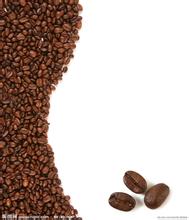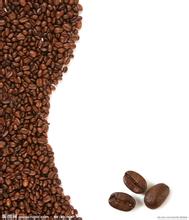Introduction to the characteristics of Fine Coffee by the treatment of Coffee Grinding degree in Fuyin Manor, Indonesia
The reputation of Java coffee, the oldest producing area, continues from the glory days of Indonesian coffee in the 18th century, and the mention of Java coffee is still reminiscent of high-quality delicacy, when the most famous blend is Java coffee with Yemeni mocha. In addition, Java also has a very famous old coffee Aged coffee, or monsoon coffee Monsooned coffee.
Java is the most economically developed island in Indonesia and the most densely populated area.
Jakarta, the capital of Indonesia, located in the northwest of Java, is the largest city in Southeast Asia. In addition, Indonesia's second and fourth largest cities are located on the island of Java.
Java is the first region in Indonesia to grow coffee and has taken the lead in the world coffee market as early as the 18th century. The famous Java mocha, made from Java coffee mixed with Yemeni mocha, represents the coffee impression of an era. In addition, there is the classic monsoon coffee Moosooned-coffee, or old coffee Aged Coffee.
Coffee cultivation in Java was originally carried out as a large farm, established by Dutch colonists in the 18th century, and gradually transformed into small farmers after World War II and many changes. High-quality Javanese coffee usually comes from five existing large farms. Although Java coffee production only accounts for about 10% of Indonesia's total coffee production, it is an important component of Indonesian boutique coffee.
The main coffee producing area on the island is located in Ijen Plateau, the Ijen Highland area around Ijen Volcano.
Java coffee is traditionally treated with water.
two。 Sumatra Sumatra Coffee
Among the most legendary coffee producing areas, well-known coffee logos include Mandheling, Lintong and Gayo Mountain.
Sumatra Island, formerly known as "Golden Island" and "Jinzhou", is famous for its rich gold deposits.
The topography of Sumatra is long and narrow. The topography of Sumatra is mainly from northwest to southeast of the island's Bali Mountains Barisan Mountains and the eastern lowlands. The mountains stretch, with more than 90 volcanoes and many volcanic lakes, volcanoes provide fertile soil suitable for coffee growth. For the tropical rain forest climate, high temperature and rainy all the year round.
Sumatra is the largest producer of Indonesian coffee, and well-known coffee-growing areas are mainly concentrated in the northern mountains, including Aceh in the northernmost province of Aceh and Sumatera Utara in North Sumatra. Including the well-known Mantenin Mandheling, Lin Dong Lintong, Jiayushan Gayo Mountain.
The name of Mandheling coffee is said to come from the local people, mandailing. The producing areas mostly point to the mountains in the north of Lake dopa, and the specific producing areas need to be verified.
Lintong coffee comes from the foothills around Lake Lake Toba in North Sumatra, Sumatra's largest volcanic lake, and its name comes from the small town called lintong in the southwest of Lake dopa.
Gayo mountain Coffee from Takengon, Takangong, Aceh Province and the mountains around Lake Lake Tawar.
Medan Medan and Padang Padang are important cities involved in coffee. They are the capital of North Sumatra and West Sumatra respectively, and they are also the most densely populated areas in Sumatra. The former is an important distribution center for Sumatra coffee exports, while the latter is also a well-known coffee production around, such as Ankola.
Coffee from Sumatra includes Arabica and Robusta, which is usually grown at high altitudes in the mountains, while robusta is grown in the lowlands. Coffee processing is famous for its traditional "wet planing", Giling Basah,wet-hulled, which is partly derived from the local humid climate.

Important Notice :
前街咖啡 FrontStreet Coffee has moved to new addredd:
FrontStreet Coffee Address: 315,Donghua East Road,GuangZhou
Tel:020 38364473
- Prev

The authentic Arusha Coffee Estate in Tanzania Flavor Description Taste Introduction
Rainfall types are divided into bimodal distribution and unimodal distribution. The areas with bi-modal rainfall distribution include the provinces around Lake Victoria Basin, the northeast highlands, the coast and the northeast inland. The bi-modal rainfall distribution area is characterized by two long and short rainy seasons. The short rainy season occurs from September to December, and the total rainfall can reach 200-500 mm. The long rainy season occurs from March to May.
- Next

Introduction to the taste characteristics of coffee varieties treated by the grinding degree of La Tisa Manor in Guatemala
Guatemala is located in the center of North and South America, and its geographical location occupies an important position in Central America. Guatemala covers an area of about 108899 square kilometers. The land features can be divided into plateau volcanoes, lowland tropical forests, volcanic sandy shore plains along the Pacific coast, and virgin lands along the Caribbean Sea. The SierraMadre Mountains of Central America span east and west of Guatemala, covering an area of
Related
- Does Rose Summer choose Blue, Green or Red? Detailed explanation of Rose Summer Coffee plots and Classification in Panamanian Jade Manor
- What is the difference between the origin, producing area, processing plant, cooperative and manor of coffee beans?
- How fine does the espresso powder fit? how to grind the espresso?
- Sca coffee roasting degree color card coffee roasting degree 8 roasting color values what do you mean?
- The practice of lattes: how to make lattes at home
- Introduction to Indonesian Fine Coffee beans-- Java Coffee producing area of Indonesian Arabica Coffee
- How much will the flavor of light and medium roasted rose summer be expressed? What baking level is rose summer suitable for?
- Introduction to the characteristics of washing, sun-drying or wet-planing coffee commonly used in Mantenin, Indonesia
- Price characteristics of Arabica Coffee Bean Starbucks introduction to Manning Coffee Bean Taste producing area Variety Manor
- What is the authentic Yega flavor? What are the flavor characteristics of the really excellent Yejasuffi coffee beans?

